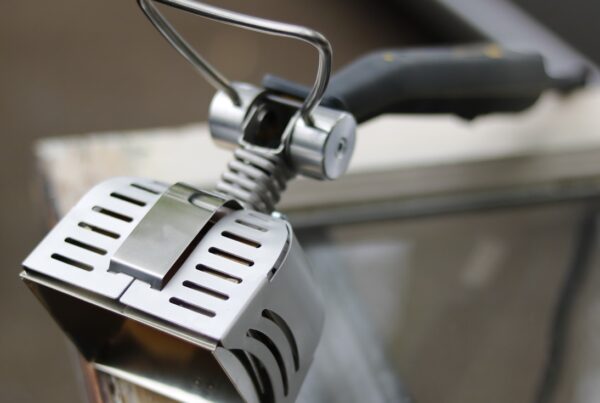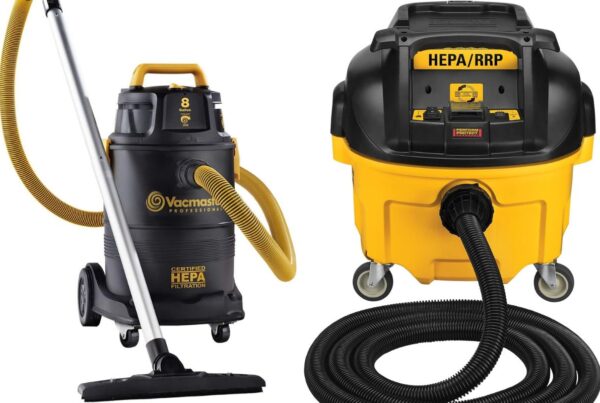Restoring an old house takes a lot of time and skill. Homeowners often find hidden surprises during restoration. Unfortunately, these surprises usually end up costing more than anticipated.

Before: Home restoration with old paint removed, down to the bare wood with Speedheater™.
If you’ve decided to restore an older home, it’s important to take the time necessary to learn the proper way to complete the task. This will save you a lot of time, money, and hassle in the future.
Assembling Your People
Restoring an old home is very different than working on a newer home. Instead of removing everything or building new parts, consider restoring some of those unique features. If you hire a contractor, find one with experience in restoration and be prepared for high costs. If you do the restoration work yourself be prepared for long, time-consuming projects. Speak with a building inspector and a contractor to estimate the type of work required to complete the job.

After: Fully restored and repainted.
Manage Your Budget
If you’re on a tight budget, it’s best to work slowly. Focus on completing smaller jobs first. You might need to analyze what needs to be done and decide which jobs are more important. Keep in mind that it’s always best to do less and spend more on quality materials than do more using poor quality materials.
When in doubt, start with the roof, windows, and masonry. While it might seem like more fun to pick out new cabinets or countertops, the quality of the kitchen won’t matter if the roof or windows leak. The window replacement companies push their products as the only way to stop window leaks in old windows. This is not true. Old wood and steel windows can often be restored. Studies have proven that stripped, repainted, reglazed, and weatherized windows last 50+ years compared to the 20-year warranty of replacement windows. The durability and life of original, heartwood cannot be matched by modern, new growth wood. If the original glass is kept, the historic look is maintained. Attractive storm windows also can be added to keep the historic look of the old windows.
Homeowners can learn to restore their windows with new skills and proper tools here. Infrared heat Speedheater™ and special window tools make glazing removal fast and safe without breaking glass.
Embrace Your Home’s Unique Characteristics
Older homes have lots of character. Learning to embrace the nonthreatening quirks of your home can save you a lot of money and help you preserve the character of your home. Uneven flooring is just one example. Fixing the flooring is both costly and unnecessary. Instead of leveling the floors, try to accommodate them into the design of the home.
When making home improvements to restore an older home you need to figure out what to sacrifice so you can preserve the rest. This will depend on the building itself, and on your special requirements such as “aging-in-place”, and on the look you want for your home.
Paint
Applying a fresh layer of paint is one of the fastest ways to update an older home. For new paint to be long-lasting, all the layers of old paint should be removed down to the bare wood. New paint allows you to modernize without changing any of the special features or characteristics of the home.
However, you need to take care when removing old paint. The paint in older homes might contain lead. This is true even if the house was recently repainted, as the bottom layers under the new paint might contain lead. Testing for the presence of lead can be simple and cheap with LeadCheck swabs from a hardware store. If you find lead in any paint in your home, assume it is present in all your paint. More thorough but expensive testing can be done by a licensed lead inspector to pinpoint specific areas where lead is present. This testing can help you prioritize your paint stripping projects. For example, high traffic areas such as floors or features where there is friction between moving parts such as windows and doors might take priority over crown molding, paneling or ceilings
Using a quality infrared heat stripping product such as Speedheater™ makes it possible to remove all layers of paint while minimizing the risk of lead poisoning. Used properly, the Speedheater™ infrared rays warm paint only to the point at which it can be easily scraped away. Low-heated paint does not create toxic lead fumes. Using the Speedheater™ enables quick and easy removal of paint in soft pieces, simplifies collection and disposal, and reduces the chance of paint chips or dust entering the environment.
Please contact us for more information about Speedheater™ products.






